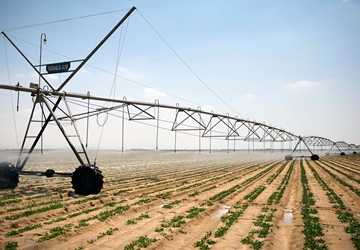More people are considering the impact environmental concerns could have on their investments as scientists raise alarms about the planet's changing climate. Since 1880, worldwide sea levels have increased 8 to 9 inches, threatening Lagos, Jakarta, and Miami.
It's not all bad news, either. For investors, this means taking responsibility for issues like transitioning to a low-carbon economy. The expense of fixing or replacing infrastructure and goods
The following are four of the most pressing threats to businesses from climate change, along with some suggestions for financial solutions.

Infrastructure and functional damage
Risk
Ruined by floods or other natural disasters is high. Due to these occurrences, businesses can be affected when production stops or workers can't go to work.
Opportunity
Businesses can make money in two main areas: improving energy efficiency in already-built infrastructure in industrialized countries and incorporating resource efficiency into brand-new commercial buildings in developing countries.
Opportunity cost
Risk
Businesses that refuse to change their "dirty" practices risk missing out on lucrative new markets.
Opportunity
Reducing one's exposure to conventional energy industries, making investments and businesses that are trying to position themselves for this move, or concentrating on specific themes like clean energy, bio-fuels, and eco-friendly hydrogen, or advanced technologies like EVs and carbon capture, could all prove beneficial for investors as the world's economies make the shift to lower carbon economies.
Reputational risk
Risk
Companies experiencing PR or environmental crises may decrease sales due to customer aversion.
Opportunity
One strategy involves diversifying investments across industries, such as traditional energy, but only purchasing from businesses that demonstrate exceptional ESG standards. That could involve prioritizing investments in firms with strong climate policies or companies that are transparent about their ecological footprint and plans to reduce them. Several businesses have set environmental sustainability commitments, including going carbon neutral by a specified date, moving to renewable energy sources, or reducing consumption through efficiencies.

Food and water shortages
Risk
Companies in drought-prone, heat-wave-prone, or polluted areas may face water or food shortages.
Opportunity
Look into methods to make farming and water systems more resilient and sustainable. Or, if the dangers seem too high, you could think twice about investing in businesses with ties to regions where water or food shortages are possible.
Forecasts predict that, unless action is taken to adapt, agricultural revenues for staple crops might drop by as much as 30 percent by 2070.
Taking advantage
There is more than one option for people who wish to include a greener approach in their investment strategy. Sustainable funds or theme investing provide another option for investors not interested in sifting through dozens of companies in search of the ones leading the way in the aforementioned areas of opportunity. Investment themes that focus on certain environmental and economic developments, from cutting-edge automobiles to green water and energy, are reflected in mutual funds and exchange-traded funds (ETFs).
It's not something reserved for a portfolio's equities alone. Bonds issued by firms with commendable environmental practices are one option for investors; another is "green bonds," the revenues that are explicitly designated for use in climate change mitigation or other environmentally sustainable endeavors.
Even though climate change is a massive, systemic concern on a global scale, its risks can be reduced, and any size investment portfolio can help.


